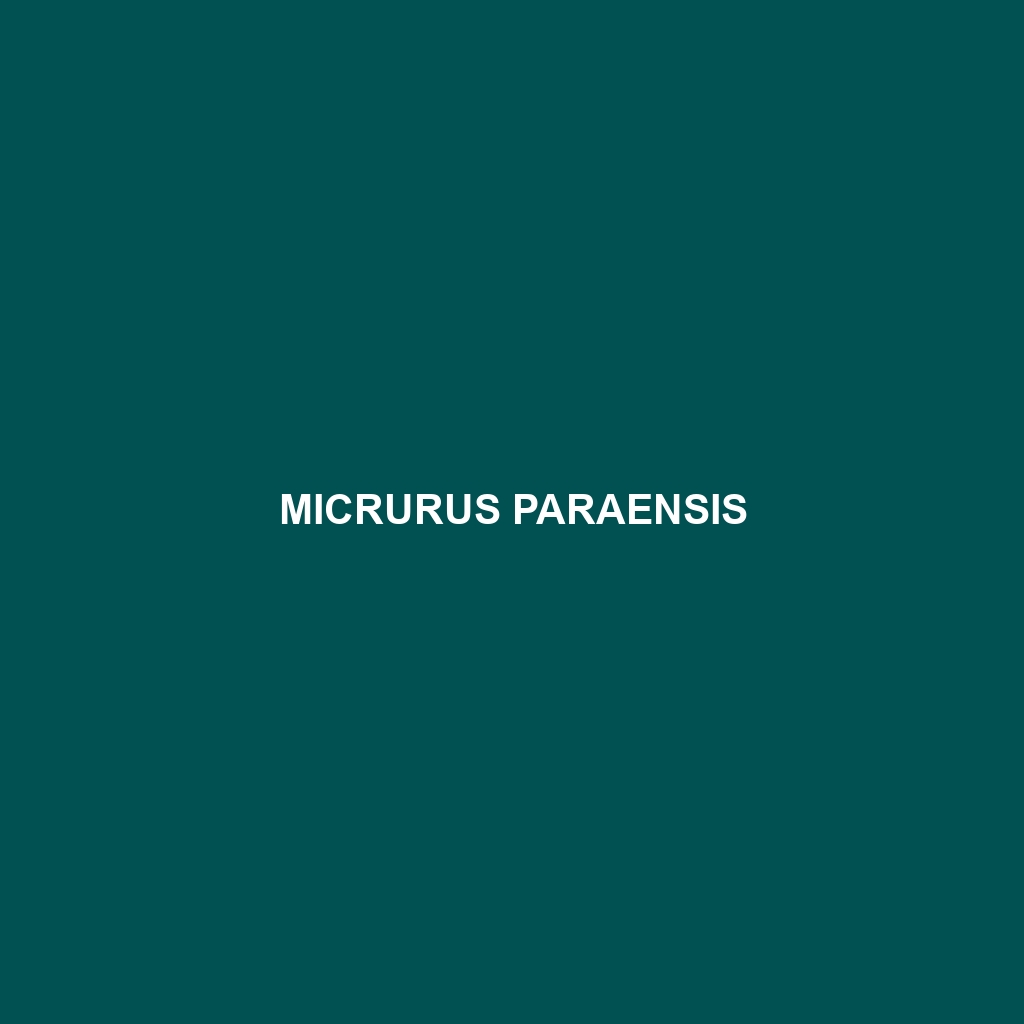Common Name
Micrurus paraensis
Scientific Name
Micrurus paraensis
Habitat
Micrurus paraensis, commonly known as the Para Coral Snake, is primarily found in the lush, biodiverse rainforests of the Amazon Basin, specifically in Brazil and parts of neighboring countries. This species thrives in humid, tropical environments where it can easily navigate through dense foliage and underbrush. The geographic region these snakes inhabit typically experiences a warm climate, characterized by high moisture levels and abundant rainfall, providing ideal conditions for their survival. Micrurus paraensis is often located near freshwater sources such as rivers and streams, which support a rich diversity of prey and contribute to the ecological dynamics of the rainforest ecosystem.
Physical Characteristics
Adults of Micrurus paraensis typically reach an average length of 1 to 1.5 meters (approximately 3 to 5 feet). They are slender in shape, exhibiting a highly distinctive coloration that acts as a warning signal to potential predators. The snake sports a vibrant pattern of alternating black and red bands, with thin white or yellow bands that separate the two colors. This aposematic coloration is characteristic of many coral snakes, indicating their venomous nature. An important distinguishing feature of Micrurus paraensis is its small, smooth scales, which give it a sleek appearance, allowing for agile movement through its humid habitat.
Behavior
Micrurus paraensis exhibits primarily nocturnal behavior, which helps it to hunt for prey under the cover of darkness. During the day, they often remain hidden beneath leaf litter or within crevices to avoid detection. Social interactions among species such as Micrurus paraensis are generally minimal, as they are solitary creatures. Mating rituals typically occur during the rainy season, when environmental conditions are most favorable for reproduction. During this time, males may engage in elaborate courtship displays to attract females, which may include body undulations and scent marking.
Diet
As a carnivore, Micrurus paraensis primarily feeds on small reptiles, amphibians, and occasionally other snakes, showcasing its role as an important predator within its ecosystem. Its diet is largely composed of lizards and geckos, which it subdues with its potent neurotoxic venom. Feeding patterns usually involve ambushing prey rather than active hunting, making use of stealth to ensure successful capture. The venom of Micrurus paraensis is a key adaptation, allowing it to immobilize prey quickly.
Reproduction
The reproductive cycle of Micrurus paraensis follows a seasonal pattern, with mating typically occurring during the wetter months of the year. Females are oviparous, laying clutches of 3 to 12 eggs in concealed locations to protect them from predators. The incubation period lasts approximately 60 to 80 days, during which the eggs develop in the warm, humid environment of the rainforest. Once hatched, the young are independent and possess the same striking coloration as adults, which serves as an inherent warning to potential predators. Parental care is non-existent, typical of many snake species.
Conservation Status
The conservation status of Micrurus paraensis is currently classified as ‘Least Concern’ according to the IUCN Red List. Despite this status, habitat destruction due to deforestation and human encroachment poses significant challenges to its populations. Conservation efforts focus on protecting the Amazon rainforest and its ecosystems, which are vital for not only the survival of the Para Coral Snake but also countless other species. Ongoing research aims to monitor their populations and further understand their role within the ecosystem.
Interesting Facts
One fascinating fact about Micrurus paraensis is its unique adaptation for survival: its venom is not only lethal to prey but also affects mammals differently than reptiles, making it a highly specialized hunter. Additionally, these snakes can often be mistaken for non-venomous species due to their coloration, which emphasizes the importance of education regarding their presence in local ecosystems to prevent unnecessary harm to this species. Furthermore, they play a crucial role in controlling the populations of their prey species, contributing to ecological balance.
Role in Ecosystem
Micrurus paraensis serves a vital ecological role, acting as both a predator and prey within its habitat. As a predator, it helps regulate the populations of various reptiles and amphibians, maintaining a balanced ecosystem. The snake itself is part of the food chain and serves as prey for larger predators, contributing to the biodiversity dynamics of the rainforest. By controlling prey populations, Micrurus paraensis indirectly supports plant health and regeneration, showcasing its importance as a keystone species within its ecosystem.
